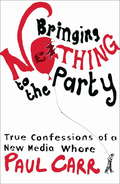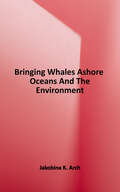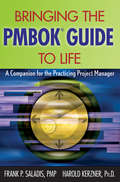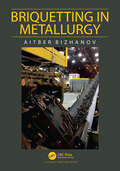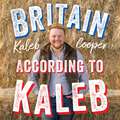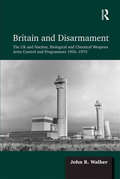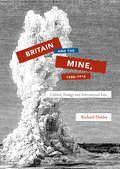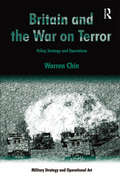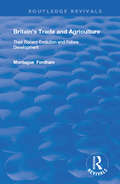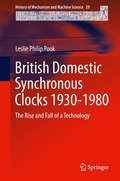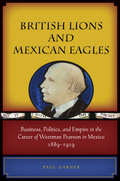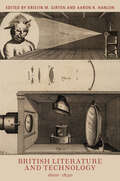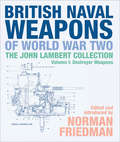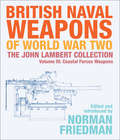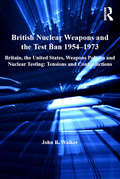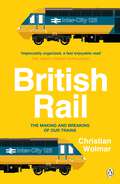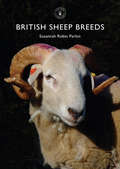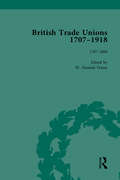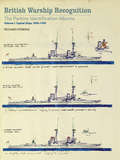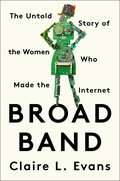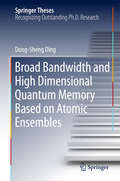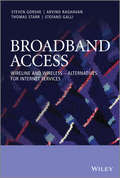- Table View
- List View
Bringing Nothing to the Party: True Confessions Of A New Media Whore
by Paul CarrA fascinating and hilarious expose of how a group of young opportunists, chancers and geniuses found instant fame and fortune by messing about on the web. And one man's attempt to follow in their footsteps.Having covered the first dot com boom, and founded a web-to-print publishing business during the second one, Paul counts many of the leading Internet entrepreneurs amongst his closest friends. These friendships mean he doesn't just attend their product launches and press conferences and speak at their events, but also gets invited to their ultra-exclusive networking events, and gets drunk at their parties.Paul has enjoyed this bizarre world of excess without having to live in it. To help the moguls celebrate raising millions of pounds of funding without having to face the wrath of the venture capitalists himself. But in 2006, Paul decided he didn't want to be a spectator any more. He had been harbouring a great dot com project of his own and decided it was time to do something about it.
Bringing Skepticism to Crop Science (SpringerBriefs in Agriculture)
by Thomas Sinclair Thomas W. RuftyGlobal food production and climate change among other concerns are societal issues that require major research input from crop science. While suggestions are abundant on how crop science can help to resolve these issues, many of the suggestions come from people who are not actually familiar with the challenges and requirements to modify crop plants grown under field conditions to achieve the necessary improvements. Efforts to alter a gene or even several genes have very rarely proven successful in having impact on crop production under realistic field conditions. This lack of success has not been addressed head on. This book serves as a reminder to crop scientists and others that open, clear-minded assessments of the entirety of evidence concerning a hypothesis is required before making claims of possible increases in crop performance. This attitude of skepticism is not a negative attitude but rather an employment of the cornerstone of scientific investigation based on formation and evaluation of hypotheses. Skeptical analyses are to be presented in the book on some of the common suggestions for improving crop plants. The six specific topics to be addressed are photosynthesis, seed number, nitrogen use efficiency, water use efficiency, crop water loss, and unconfirmed field observations. Each of the topics in this book, will first be reviewed to present the origins of the popular assumptions about how specific plant modification will result in improved crop performance. The review of the background information will be followed by an examination of the evidence, logic, and predicted outcomes for the assumed benefits of the modifications. Finally, each chapter will offer novel, alternate approaches to plant modification that have documented support for positively impacting crop performance. The book will not be written in specialized, detail language but offer access for those with a wide range of interests in options for increasing crop production in the future. The goal of the book is to provide information that is useful to those with interests ranging from climatologist to food-oriented sociologists. Of course, the topics covered will be of direct interest to those studying plant sciences, particularly crop scientists. The hope is to challenge a reader to re-examine some of her/his assumptions about crop improvement and approach the topic with a renewed practice of skepticism in formulating and evaluating hypotheses.
Bringing Whales Ashore: Oceans and the Environment of Early Modern Japan
by Jakobina K. ArchJapan today defends its controversial whaling expeditions by invoking tradition--but what was the historical reality? In examining the techniques and impacts of whaling during the Tokugawa period (1603-1868), Jakobina Arch shows that the organized, shore-based whaling that first developed during these years bore little resemblance to modern Japanese whaling. Drawing on a wide range of sources, from whaling ledgers to recipe books and gravestones for fetal whales, she traces how the images of whales and by-products of commercial whaling were woven into the lives of people throughout Japan. Economically, Pacific Ocean resources were central in supporting the expanding Tokugawa state. In this vivid and nuanced study of how the Japanese people brought whales ashore during the Tokugawa period, Arch makes important contributions to both environmental and Japanese history by connecting Japanese whaling to marine environmental history in the Pacific, including the devastating impact of American whaling in the nineteenth century.
Bringing the PMBOK Guide to Life
by Harold R. Kerzner Frank P. SaladisTransform the PMBOK® Guide from a framework to a sharpened tool in your project manager's toolboxIn project management circles, it's often joked that "there's the right way, the wrong way, and the PMBOK® way" to manage projects. In truth, it's really about the methodology you choose. The PMBOK® Guide is a consensus-based standard that thousands of project management professionals find immensely valuable in the process of developing an effective methodology. But exactly how does a project manager take the information provided in the PMBOK® Guide and apply it most effectively and appropriately to an actual project environment? This book can be the answer. It is basically a "guide to the guide"-a road map to applying the tools of the PMBOK® Guide to your organization's or project's unique nature and requirements.Bringing the PMBOK® Guide to Life: A Companion for the Practicing Project Manager builds a bridge between the PMBOK® Guide and the common needs of today's practicing project managers. It explains and elaborates on specific techniques, terms, and the application of tools that will enable project managers to effectively adapt the principles and processes described in the PMBOK® Guide to the practical world of project management. Readers will find suggested approaches for the use of project management tools and techniques along with templates developed directly from information provided in the PMBOK® Guide. Suggestions and study tips are also included to assist in preparing for the PMP exam, and a Project Plan Accelerator (PPA) can be used with the PMBOK® Guide by project managers and project teams to develop plans that are specifically tailored to meet the needs of your team, your clients, and your sponsoring organization. Written by two of the leading experts in the field, Bringing the PMBOK® to Life will help every project manager translate the PMBOK® Guide's tools and techniques into actionable, commonsense approaches to managing a project.
Briquetting in Metallurgy
by Aitber BizhanovIn the arsenal of ways of carbon consumption and emissions reduction, the main tasks of modern metallurgy, briquetting occupies significant places. Today, briquetting is a cost-effective, industrially mastered technology capable to process natural and anthropogenic materials without their preliminary high-temperature treatment. The book summarizes the scientific research and the practice of briquettes use for the smelting of cast iron, steel, ferroalloys and the production of direct reduced iron. Comparison with sintering and pelletization is given. Particular attention is paid to debunking the myths about briquetting, which are firmly rooted in the minds of metallurgists.
Britain According to Kaleb: The Wonderful World of Country Life
by Kaleb CooperAn entertaining whistle-stop tour of rural British traditions, from the bestselling author of The World According to Kaleb.Ever wondered what goes down at a Tar Barrel Festival? Don't know your wassailing from your wife carrying? Well buckle up, because Kaleb Cooper - star of hit TV show Clarkson's Farm and Sunday Times bestselling author - is here to take you on a guided tour of some of the UK's most eccentric rural traditions. In his smash-hit debut The World According to Kaleb, we learnt how Kaleb feels about everything from existentialism to comb-overs, and why he doesn't want to visit the Mediterranean. In this follow-up, Kaleb casts his focus closer to home to examine what people like to get up to in the great outdoors. You'll go gravy wrestling in Lancashire, nettle eating in Somerset, and venture to Hereford for the significant occasion that is Best Dressed Stick.Along the way Kaleb will muse upon enduring British traditions like Morris Dancing and country fairs with his trademark warmth and deadpan wit. For fans of Kaleb's unique perspective and amusing hot takes, this will be a must-read.
Britain According to Kaleb: The Wonderful World of Country Life
by Kaleb CooperAn entertaining whistle-stop tour of rural British traditions, from the bestselling author of The World According to Kaleb.Ever wondered what goes down at a Tar Barrel Festival? Don't know your wassailing from your wife carrying? Well buckle up, because Kaleb Cooper - star of hit TV show Clarkson's Farm and Sunday Times bestselling author - is here to take you on a guided tour of some of the UK's most eccentric rural traditions. In his smash-hit debut The World According to Kaleb, we learnt how Kaleb feels about everything from existentialism to comb-overs, and why he doesn't want to visit the Mediterranean. In this follow-up, Kaleb casts his focus closer to home to examine what people like to get up to in the great outdoors. You'll go gravy wrestling in Lancashire, nettle eating in Somerset, and venture to Hereford for the significant occasion that is Best Dressed Stick.Along the way Kaleb will muse upon enduring British traditions like Morris Dancing and country fairs with his trademark warmth and deadpan wit. For fans of Kaleb's unique perspective and amusing hot takes, this will be a must-read.
Britain According to Kaleb: The Wonderful World of Country Life
by Kaleb CooperAn entertaining whistle-stop tour of rural British traditions, from the bestselling author of The World According to Kaleb.Ever wondered what goes down at a Tar Barrel Festival? Don't know your wassailing from your wife carrying? Well buckle up, because Kaleb Cooper - star of hit TV show Clarkson's Farm and Sunday Times bestselling author - is here to take you on a guided tour of some of the UK's most eccentric rural traditions. In his smash-hit debut The World According to Kaleb, we learnt how Kaleb feels about everything from existentialism to comb-overs, and why he doesn't want to visit the Mediterranean. In this follow-up, Kaleb casts his focus closer to home to examine what people like to get up to in the great outdoors. You'll go gravy wrestling in Lancashire, nettle eating in Somerset, and venture to Hereford for the significant occasion that is Best Dressed Stick.Along the way Kaleb will muse upon enduring British traditions like Morris Dancing and country fairs with his trademark warmth and deadpan wit. For fans of Kaleb's unique perspective and amusing hot takes, this will be a must-listen.(P) 2023 Quercus Editions Limited
Britain and Disarmament: The UK and Nuclear, Biological and Chemical Weapons Arms Control and Programmes 1956-1975
by John R. WalkerSince the use of poison gas during the First World War and the dropping of atomic bombs on Japan at the end of the Second World War, nuclear, biological or chemical (NBC) weapons have registered high on the fears of governments and individuals alike. Recognising both the particular horror of these weapons, and their potential for inflicting mass death and destruction, much effort has been expended in finding ways to eliminate such weapons on a multi-lateral level. Based on extensive official archives, this book looks at how successive British governments approached the subject of control and disarmament between 1956 and 1975. This period reflects the UK's landmark decision in 1956 to abandon its offensive chemical weapons programme (a decision that was reversed in 1963, but never fully implemented), and ends with the internal travails over the possible use of CR (tear gas) in Northern Ireland. Whilst the issue of nuclear arms control has been much debated, the integration of biological and chemical weapons into the wider disarmament picture is much less well understood, there being no clear statement by the UK authorities for much of the period under review in this book as to whether the country even possessed such weapons or had an active research and development programme. Through a thorough exploration of government records the book addresses fundamental questions relating to the history of NBC weapons programmes, including the military, economic and political pressures that influenced policy; the degree to which the UK was a reluctant or enthusiastic player on the international arms control stage; and the effect of international agreements on Britain's weapons programmes. In exploring these issues, the study provides the first attempt to assess UK NBC arms control policy and practice during the Cold War.
Britain and the Mine, 1900–1915: Culture, Strategy And International Law
by Richard DunleyThis book examines Britain’s complex relationship with the mine in the years 1900-1915. The development of mine warfare represented a unique mix of challenges and opportunities for Britain in the years before the First World War. The mine represented the antithesis of British maritime culture in material form, and attempts were made to limit its use under international law. At the same time, mine warfare offered the Royal Navy a solution to its most difficult strategic problem. Richard Dunley explores the contested position occupied by the mine in the attitudes of British policy makers, and in doing so sheds new light on the overlapping worlds of culture, strategy and international law.
Britain and the War on Terror: Policy, Strategy and Operations (Military Strategy and Operational Art)
by Warren ChinWhy did Britain come to play such a prominent role in the war on terror and why did the military instrument come to be the dominant theme in the British prosecution of what was an ideological and political struggle? This book is an analysis of Britain’s war against Al Qaeda and the phenomenon of international terrorism which marked a paradigm shift in the nature and conduct of war in the twenty-first century. At the heart of the book is an attempt to understand why Britain, which possessed a wealth of experience in the conduct of counterterrorism, counterinsurgency and small wars, developed a strategic and operational design to defeat the Islamist threat which proved to be deeply flawed. In addressing this question the book explores the complex intellectual, doctrinal and geopolitical challenge posed by Al Qaeda and international terrorism and how and why the British response took the form that it did. In conducting this analysis the book raises important questions about the assumptions and perceptions of those in government who led the UK into this conflict, the nature of the civil military relationship in Britain and how well it functioned, and finally the competence of its security forces in being able to deal with this threat both domestically and overseas.
Britain's Trade and Agriculture: Their Recent Evolution and Future Development (Routledge Revivals)
by Montague FordhamPublished in 1932: The author in his Britain's Trade and Agriculture, though almost ruthlessly exposes the fallacies that lie behind the modern accepted views on industry and agriculture, though he obviously writes without desire to attract attention, but simply to clarify facts and to suggest practical solutions.
British Domestic Synchronous Clocks 1930-1980: The Rise and Fall of a Technology (History of Mechanism and Machine Science #29)
by Leslie Philip PookThis book complements available one-make books on domestic synchronous clocks. It is also a history of science book that sets British domestic synchronous clocks, their manufacturers and technology in their social context. Part I covers the historical background, British domestic synchronous clock manufacturers and brands, how synchronous clocks work, domestic synchronous clock cases, practical advice on the servicing of domestic synchronous clocks and analysis of the marketing and reliability of British domestic synchronous clocks. This analysis provides an explanation of the rise and eventual fall of their technology. Part II contains galleries of a selection of British domestic synchronous clocks and of the movements with which they are fitted. There is a front and back view of each clock, together with a brief description. Views of each movement include views with the movement partly dismantled, together with a brief technical description of the movement. This profusely illustrated book is primarily for fellow enthusiasts and is based on an extensive archive of information on domestic synchronous clocks, their movements and their manufacturers. Current electrical regulations mean that professional clockmakers are reluctant to repair synchronous clocks. In fact, provided that they have not been mistreated, synchronous clocks are usually reliable, and quite easy to maintain.
British Lions and Mexican Eagles: Business, Politics, and Empire in the Career of Weetman Pearson in Mexico, 1889-1919
by Paul GarnerBetween 1889 and 1919, Weetman Pearson became one of the world's most important engineering contractors, a pioneer in the international oil industry, and one of Britain's wealthiest men. At the center of his global business empire were his interests in Mexico. While Pearson's extraordinary success in Mexico took place within the context of unprecedented levels of British trade with and investment in Latin America, Garner argues that Pearson should be understood less as an agent of British imperialism than as an agent of Porfirian state building and modernization. Pearson was able to secure contracts for some of nineteenth-century Mexico's most important public works projects in large part because of his reliability, his empathy with the developmentalist project of Mexican President Porfirio Díaz, and his assiduous cultivation of a clientelist network within the Mexican political elite. His success thus provides an opportunity to reappraise the role played by overseas interests in the national development of Mexico.
British Literature and Technology, 1600-1830 (Aperçus: Histories Texts Cultures)
by Aaron R. Hanlon Joseph Drury Kristin M. Girten Laura Francis Erik L. Johnson Thomas A. Oldham Zachary M. Mann Kevin MacDonnell Emily M. West Deven M. Parker Jamison KantorEnlightenment-era writers had not yet come to take technology for granted, but nonetheless were—as we are today—both attracted to and repelled by its potential. This volume registers the deep history of such ambivalence, examining technology’s influence on Enlightenment British literature, as well as the impact of literature on conceptions of, attitudes toward, and implementations of technology. Offering a counterbalance to the abundance of studies on literature and science in seventeenth- and eighteenth-century Britain, this volume’s focus encompasses approaches to literary history that help us understand technologies like the steam engine and the telegraph along with representations of technology in literature such as the “political machine.” Contributors ultimately show how literature across genres provided important sites for Enlightenment readers to recognize themselves as “chimeras”—“hybrids of machine and organism”—and to explore the modern self as “a creature of social reality as well as a creature of fiction.”
British Naval Weapons of World War Two, Volume I: Destroyer Weapons (The John Lambert Collection)
by Norman Friedman&“For anyone wishing to super-detail any British destroyer of this era, this book looks to be a real must-have.&” —Nautical Research Guild's Model Ship World John Lambert was a renowned naval draftsman, whose plans were highly valued for their accuracy and detail by modelmakers and enthusiasts. By the time of his death in 2016 he&’d produced over 850 sheets of drawings, many of which have never been published—until now. Lambert&’s interest was always focused on smaller warships and his weapons drawings tend to be of open mountings—the kind that present a real challenge to modelmakers—rather than enclosed turret guns, but he also produced drawings of torpedo tubes, underwater weapons, fire-control directors, and even some specific armament-related deck fittings. This first volume in a series covers all such weapons carried by British destroyers of this era, with additional appendices devoted to earlier guns still in service, and destroyer-caliber weapons only mounted in larger ships. The drawings are backed by introductory essays by Norman Friedman, an acknowledged authority on naval ordnance, while a selection of photographs add to the value of the book as visual reference.
British Naval Weapons of World War Two, Volume III: Coastal Forces Weapons (The John Lambert Collection #3)
by Norman Friedman“Lambert was a drafter of no mean skill . . . his drawings are concise, clear, and invaluable to scratchbuilders and super-detailers. Very highly recommended!” —Nautical Research JournalJohn Lambert was a renowned naval draftsman whose plans were highly valued for their accuracy and detail by modelmakers and enthusiasts. By the time of his death in 2016 he had produced over 850 sheets of drawings, many of which had never been published. Now they have become available in these remarkable collections, with expert commentary and captioning included. The initial volumes concentrate on British naval weaponry used in the Second World War, thus completing the project Lambert was working on when he died. His interest was always focused on smaller warships and his weapons drawings tend to be of open mountings—the kind that present a real challenge to modelmakers—rather than enclosed turret guns, but he also produced drawings of torpedo tubes, underwater weapons, fire-control directors, and even some specific armament-related deck fittings. Following the earlier volumes on destroyer and escort armament, this one covers the multitude of weapons carried by Coastal Forces, many of which were improvised, ad hoc, or obsolescent, but eventually led to powerful purpose-designed weaponry. An appendix covering the main deck guns carried by British submarines of this era is included, along with an introductory essay by naval ordnance authority Norman Friedman and a selection of photos.
British Nuclear Weapons and the Test Ban 1954-1973: Britain, the United States, Weapons Policies and Nuclear Testing: Tensions and Contradictions
by John R. WalkerIn 1962 Dean Acheson famously described Britain as having lost an Empire but not yet found a role. Perhaps nowhere is this more apparent than in the realms of nuclear weapons. An increasingly marginal world power, successive post-war British governments felt that an independent nuclear deterrent was essential if the country was to remain at the top table of world diplomacy. Focusing on a key twenty-year period, this study explores Britain's role in efforts to bring about a nuclear test ban treaty between 1954 and 1973. Taking a broadly chronological approach, it examines the nature of defence planning, the scientific goals that nuclear tests were designed to secure, Anglo-American relationships, the efficacy of British diplomacy and its contribution to arms control and disarmament. A key theme of the study is to show how the UK managed to balance the conflicting pressures created by its determination to remain a credible nuclear power whilst wanting to pursue disarmament objectives, and how these pressures shifted over the period in question. Based on a wealth of primary sources this book opens up the largely ignored subject of the impact of arms control on the UK nuclear weapons programme. Its appraisal of the relationship between the requirements and developments of the UK nuclear weapons programme against international and domestic pressures for a test ban treaty will be of interest to anyone studying post-war British defence and foreign policy, history of science, arms control, disarmament and non-proliferation and international relations. It also provides important background information on current events involving nuclear proliferation and disarmament.
British Rail
by Christian WolmarThe authoritative and fascinating history of the rise and fall of the state-owned British Rail'Wolmar's book is impeccably organised and makes a fast, enjoyable read' THE TIMES Literary Supplement________British Rail wasn't how we're asked to remember it . . .From ancient rolling stock to patchy service, stale sandwiches to the wrong kind of snow, British Rail - our last great state-owned organisation to be privatised - has received a terrible press.But after its controversial 1948 creation, British Rail was actually an innovative powerhouse that over five decades transformed the UK, creating one of the fastest regular rail services in the world.Award-winning journalist Christian Wolmar takes us from promise to punchline, exploring British Rail's birth into post-war austerity, the many battles and struggles to evolve what many considered to be a dinosaur, and how, at the height of its success, the service was misunderstood and unfairly maligned, ruthlessly broken up and privatised._______Praise for Christian Wolmar'Wolmar is the high priest of railway studies' Literary Review'The greatest expert on British trains' Guardian'Our most eminent transport journalist' Spectator'If the world's railways have a laureate, it is surely Christian Wolmar' Boston Globe 'Christian Wolmar is in love with the railways. He writes constantly and passionately about them. He is their wisest, most detailed historian and a constant prophet of their rebirth . . . if you love the hum of the wheels and of history, then Christian Wolmar is your man' Observer
British Sheep Breeds
by Susannah ParkinThis revised edition of British Sheep Breeds explains how this hardy species has evolved, survived and developed over the past 250 years and provides a history of the species, their importance in British farming through the centuries, evolution of the various breeds, their origins and domestication. The breeds are categorised into groups depending on their role within the stratification system; primitive, mountain, hill, upland and lowland breeds. A description of the breed, evolution and wool type accompanies each illustration. Included is the normal behavior of sheep, biological data and how sheep contribute to the conservation of the landscape as well as conserving their species.
British Trade Unions, 1707–1918, Part I, Volume 1: 1707-1800
by W Hamish FraserDrawing from a variety of libraries and archives, this collection brings together material to illustrate the history of the development of trade unionism and industrial relations. It spans the period from the early journeymen's trade societies as they emerged in the 18th-Century through to the end of the First World War. Part I Volume 1 looks at 1707-1800.
British Warship Recognition: Volume I: Capital Ships, 1895–1939
by Richard PerkinsIn the inter-war years Richard Perkins, a keen amateur photographer and avid collector, amassed one of the worlds largest personal collections of warship negatives. This he eventually bequeathed to the National Maritime Museum, where it still forms the core of the historic photos naval section. While he was actively acquiring photos, he found that many were neither identified nor accurately dated, so he began to compile an album of his own drawings, which incorporated as much detail as possible on individual ships that could be amended as he discovered more information. His main concentration was on features differentiating ships of the same class and, wherever possible, precisely dating alterations to their appearance, all portrayed in exquisite multi-coloured annotated line drawings. This project grew into an enormous resource covering virtually every Royal Navy ship from 1860 to 1939, when security restrictions forced Perkins to stop work. This material was also donated to the NMM, where it was bound into eight large folio volumes that became a key reference for the curators of historic photos, but unknown and almost inaccessible to the interested public. This makes this first publication an event of the utmost importance for every enthusiast and ship modeller it reproduces all the drawings at full size and in colour, and will eventually form a multi-volume set of unique reference value.
Broad Band: The Untold Story of the Women Who Made the Internet
by Claire L. Evans<p>If you loved Hidden Figures or The Rise of the Rocket Girls, you'll love Claire Evans' breakthrough book on the women who brought you the internet--written out of history, until now. <P>The history of technology you probably know is one of men and machines, garages and riches, alpha nerds and brogrammers--but from Ada Lovelace, who wrote the first computer program in the Victorian Age, to the cyberpunk Web designers of the 1990s, female visionaries have always been at the vanguard of technology and innovation. <P>In fact, women turn up at the very beginning of every important wave in technology. <P>They may have been hidden in plain sight, their inventions and contributions touching our lives in ways we don't even realize, but they have always been part of the story. <P>VICE reporter and YACHT lead singer Claire L. Evans finally gives these unsung female heroes their due with her insightful social history of the Broad Band, the women who made the internet what it is today.</p> <p>Seek inspiration from Grace Hopper, the tenacious mathematician who democratized computing by leading the charge for machine-independent programming languages after World War II. <P>Meet Elizabeth "Jake" Feinler, the one-woman Google who kept the earliest version of the Internet online, and Stacy Horn, who ran one of the first-ever social networks on a shoestring out of her New York City apartment in the 1980s. <P> Join the ranks of the pioneers who defied social convention to become database poets, information-wranglers, hypertext dreamers, and glass ceiling-shattering dot com-era entrepreneurs. <P>This inspiring call to action shines a light on the bright minds whom history forgot, and shows us how they will continue to shape our world in ways we can no longer ignore. <P>Welcome to the Broad Band. You're next.</p>
Broad Bandwidth and High Dimensional Quantum Memory Based on Atomic Ensembles (Springer Theses)
by Dong-Sheng DingThis thesis presents an experimental study of quantum memory based on cold atomic ensembles and discusses photonic entanglement. It mainly focuses on experimental research on storing orbital angular momentum, and introduces readers to methods for storing a single photon carried by an image or an entanglement of spatial modes. The thesis also discusses the storage of photonic entanglement using the Raman scheme as a step toward implementing high-bandwidth quantum memory. The storage of photonic entanglement is central to achieving long-distance quantum communication based on quantum repeaters and scalable linear optical quantum computation. Addressing this key issue, the findings presented in the thesis are very promising with regard to future high-speed and high-capacity quantum communications.
Broadband Access
by Stefano Galli Steven Gorshe Arvind Raghavan Thomas StarrWritten by experts in the field, this book provides an overview of all forms of broadband subscriber access networks and technology, including fiber optics, DSL for phone lines, DOCSIS for coax, power line carrier, and wireless. Each technology is described in depth, with a discussion of key concepts, historical development, and industry standards. The book contains comprehensive coverage of all broadband access technologies, with a section each devoted to fiber-based technologies, non-fiber wired technologies, and wireless technologies. The four co-authors' breadth of knowledge is featured in the chapters comparing the relative strengths, weaknesses, and prognosis for the competing technologies.Key Features:Covers the physical and medium access layers (OSI Layer 1 and 2), with emphasis on access transmission technologyCompares and contrasts all recent and emerging wired and wireless standards for broadband access in a single referenceIllustrates the technology that is currently being deployed by network providers, and also the technology that has recently been or will soon be standardized for deployment in the coming years, including vectoring, wavelength division multiple access, CDMA, OFDMA, and MIMOContains detailed discussion on the following standards: 10G-EPON, G-PON, XG-PON, VDSL2, DOCSIS 3.0, DOCSIS Protocol over EPON, power line carrier, IEEE 802.11 WLAN/WiFi, UMTS/HSPA, LTE, and LTE-Advanced
